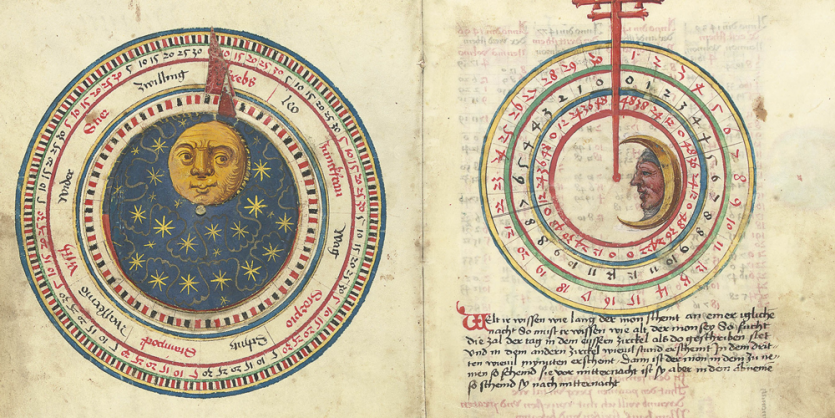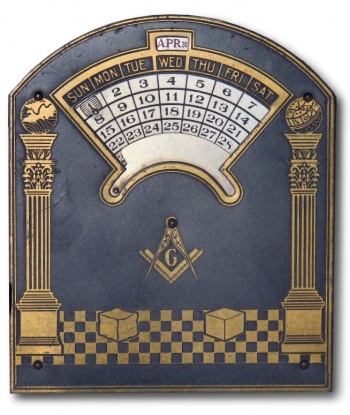En: Anno Lucis
Shedding Light on Anno Lucis
Author – Bro. Joshua D. Parmer, Past Master Lodge No. 43 in Lancaster, PA
Source: Mackey’s Encyclopedia of Freemasonry http://www.masonic-lodge-of-education.com/masonic-calendar.html
Have you ever wondered about our Blue Lodge dating system of “AL” or those of other appendant Masonic bodies? Most of you probably know or have heard of the abbreviation of AL after the dates listed your blue lodge monthly notice. What you may not know is that it stands for Anno Lucis, a Latin phrase meaning “In the Year of Light.” This date is calculated by adding 4000 years to the present Anno Domini Year or as Mackey’s calls the “Vulgar Era.”
For those that may not understand Anno Domini, that means “In the Year of Our Lord.” Research shows that people like Dr. Anderson, who wrote Anderson’s Constitution, first used this dating system to explain the history of Freemasonry. You see in the 1720s AD most people believed the Bible to be accurate to the letter, that the world was made in 6 days of 24 hour increments, that the world was simply 4,000 years old before Jesus Christ hit the scene. (That was when the first verses of the bible took place and God said “Let there be light, and there was light.”) Thus we are in the 6,016th year Anno Lucis.
Virtually all Masonic bodies have their own dating method indicative of some important point of their own histories. For instance, two of the Rites (Scottish and York) use the dating systems of Anno Mundi and Anno Ordinis – abbreviated AM and AO respectively. Anno Mundi means “In the Year of the World,” it is the dating system used by The Ancient and Accepted Rite Scottish Rite. It is calculated by adding 3760 to the Present Anno Domini year, until September when you should add one more year as this is when this calendar year starts. Presently we are in the year 5,776 Anno Mundi. Anno Mundi is based on the Hebrew calendar and closely associated with Anno Lucis. However the 240 year difference is based on differences with the Gregorian Calendar presently in use that calculates Anno Domini. This system of Anno Mundi is also synonymous with Anno Hebraico, or AH.
Another Masonic calendar is that of the Masonic Knights Templar of the York Rite. It is called Anno Ordinis, abbreviated A.O. and means “In the Year of the Order.” This system of dating is calculated by subtracting 1118 years from the Anno Domini system, thus we are in the year 898 Anno Ordinis. The Templars were a monastic group of knights who protected the Holy Lands and their Christian pilgrims. Their historic connection to our present order is tenuous at best by most orthodox Masonic historians, nonetheless the principles and practices they lived by greatly match our moral designs, and theories about our connection continue to abound.
There are dating systems for each York Rite body’s use as well. The Chapter of the York Rite works in Anno Inventionis (meaning “in the year of discovery”), the Council of the York Rite work in Anno Depositionis (meaning “in the year of deposit”). Other dating systems found were Anno Egyptiaca (a reference to the consolidation of the Eygptian monarchy under Menes) and Anno Bonafacio (a reference to Melchizedek blessing Abraham).
It can be confusing to say the least, but now you know a little more about just what all those extra letters are referring to in your Lodge Notices.
Anno Lucis
Source: Phoenixmasonry
The Masonic calendar traditionally dated from 4004 BCE; the creation of the universe, Anno Mundi, as computed by Bishop Ussher in 1650-54 and stated in the margins of older printings of the Authorized King James Bible. This was replaced in Masonic documents by the year of light, Anno Lucis, which dates from 4000 BCE. There is no Masonic significance to either date, other than a desire by early Masonic writers to create as ancient a lineage for Freemasonry as their imaginations would allow.
"Bro. John J. Bond, in his Handy Book of Rules and Tables, to our mind gives a clue to this difference, which we never remember seeing noted elsewhere, as applicable to the subject. 'The birth of our Lord took place in the 28th year of the reign of Augustus; and Dionysius, by reckoning from 727 A.U.C., the year in which the Emperor took the name of Augustus, made the 28th year fall to 754 A.U.C., four years short of the date observed by the early Christians, who reckoning their years of the Emperor from the date of the battle of Actium (723 A.U.C.). to commemorate which the era of the Roman Emperors was founded, made the 28th year of Augustus fall to 750 A.U.C. for the birth of our Lord, or "Anno Christi.'"
Kenning's Masonic Cyclopaedia and Handbook of Masonic Archaeology, History and Biography. A.F.A. Woodford, ed. George Kenning, London: 1878. p. 650.
James Ussher (1581-1656), an Irish theologian and scholar, at one time had possibly the largest collection of books in Western Europe. A tireless collector, he eventually donated the collection to Trinity College, Dublin, which his uncle Henry Ussher (c.1550-1631) helped found. During his lifetime he was widely known as a defender of learning, of the value of books secular and sacred, and a proponent of maintaining an independent identity for Irish Protestant faith. He was appointed Archbishop of Armagh in 1625.
What he is best remembered for is his chronology of creation. Using the Book of Genesis, and other histories, he determined that the universe was created in the year 4004 BCE, on October 23rd, beginning at sunset of the 22nd. Starting in 1701, this chronology was inserted in the margins of many editions of the King James Authorized Version of the Bible. Dr. John Lightfoot later refined the computation to 9:00 a.m.


